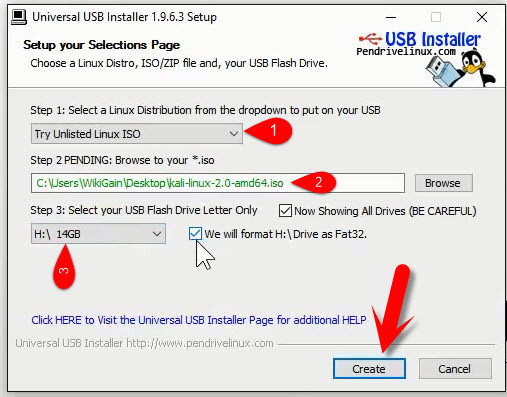

- KALI LINUX ISO FILE AMD64 HOW TO
- KALI LINUX ISO FILE AMD64 FULL VERSION
- KALI LINUX ISO FILE AMD64 INSTALL
- KALI LINUX ISO FILE AMD64 PASSWORD
- KALI LINUX ISO FILE AMD64 DOWNLOAD
Enter print devices to print out the disks attached to your notebook (just like diskutil list).

Start by opening up a Terminal and enter parted, a program for creating and manipulating partition tables. Now that you are booted up on Kali GNU/Linux Live, you will have to create a partition to put the persistence configuration files.
KALI LINUX ISO FILE AMD64 PASSWORD
The default user is root with the password toor so you can log in with those. On XFCE, you will presented with the login screen below. From this screen choose Live system (persistence, check /prst). The exact names on your screen might vary, but the Kali GNU/Linux USB is likely to be named EFI Boot.īooting from your Kali GNU/Linux USB drive, you will be presented with the Kali boot up screen. You will be presented with disks to boot from. Make sure to hold the OPTION KEY - ⌥ while your computer is starting up to enter the Startup Manager. Finally, you can increase the batch size bs to increase the speed, but I have found bs=4m to be stable.Īfter the flash process is complete, you will boot to your USB by rebooting your MacBook.

Also note that the -s 3G provides the file size to be used in calculating the ETA. iso file and more importantly the target disk. BE VERY CAREFUL to enter the correct paths to your. Will start flashing the iso file to your selected drive and show you a progress bar/ETA. The commandĭd if=kali-linux-xfce-2019-W04-amd64.iso | pv -s 3G | dd of=/dev/disk2 bs=4m Using pv, we can pipe the dd commands through it to monitor the progress.
KALI LINUX ISO FILE AMD64 INSTALL
The dd command by default by itself doesn’t have a progress bar, so if you want one you will have to install pv on your macOS by brew install pv. Now that you know your disk’s path, you will have to unmount it by diskutil unmountDisk /dev/disk2. diskutil list will show the disks attached to your MacBook.Īs you can see, I can identify my 16GB SanDisk USB as /dev/disk2. It is also recommended to do a sudo su beforehand because most of the commands require root privileges. If you are using dd, then you have to first identify your USB drive. iso file and the USB to be flashed on the GUI. If you are using balena Etcher, all you have to do is select the. Now that we have ensured the integrity of the file, it is time to flash it. In my case I am using the kali-linux-xfce-2019-W04-amd64.iso file, and as you can see, the checksums match. iso file with the command shasum -a 256 YOUR_KALI.iso and compare it with the checksum provided. You can check the SHA256SUM of your downloaded.
KALI LINUX ISO FILE AMD64 DOWNLOAD
On the kali-weekly download page, the file called SHA256SUMS contains the SHA-256 codes for the. iso file, it is always good practice to check the shasum to avoid cases of files corrupted on transfer. Also dd is a bit dangerous to use, you can overwrite crucial files if you are not careful. You can do the flashing with the built-in command dd, but I have found balena Etcher to be faster. I recommend the XFCE version of the latest weekly build (the “official” releases can sometimes fall behind, which causes problems with the version of the included Linux kernel). iso file of the Kali GNU/Linux variant you want to use.
KALI LINUX ISO FILE AMD64 FULL VERSION
The full version of the Kali GNU/Linux ISO takes about 3GB, so theoretically any USB drive with larger capacity should work. See Linux and the GNU System by Richard Stallman for why this is an issue. NOTE: You will notice that I have paid attention to use the correct form “GNU/Linux” through this article. I will be doing this on a MacBook Air (13-inch, Early 2014) with macOS Mojave 10.14.1 installed, so your mileage may vary on another system. This can be an extremely useful enhancement, and enables you to retain documents, collected testing results, configurations, etc., when running Kali Linux “Live” from the USB drive, even across different systems.”

As the official documentation suggests: ” (…) the preservation of data on the “Kali Live” USB drive - across reboots of “Kali Live”. The persistence feature will allow the system to be saved and persist through different boot-ups.
KALI LINUX ISO FILE AMD64 HOW TO
In this post I will show you how to setup a Kali GNU/Linux Live system with persistence on a USB drive, so that you can carry it around anywhere and boot from it whenever you want to.


 0 kommentar(er)
0 kommentar(er)
